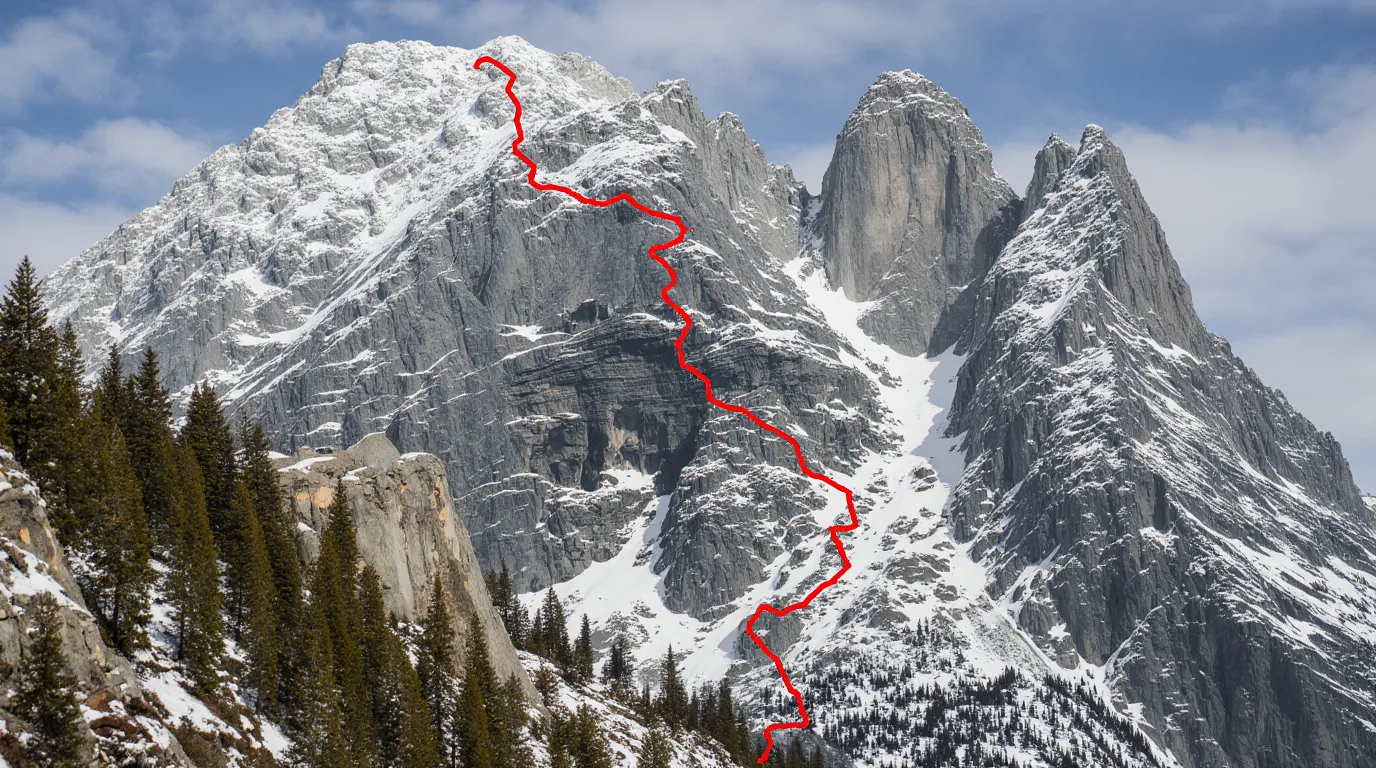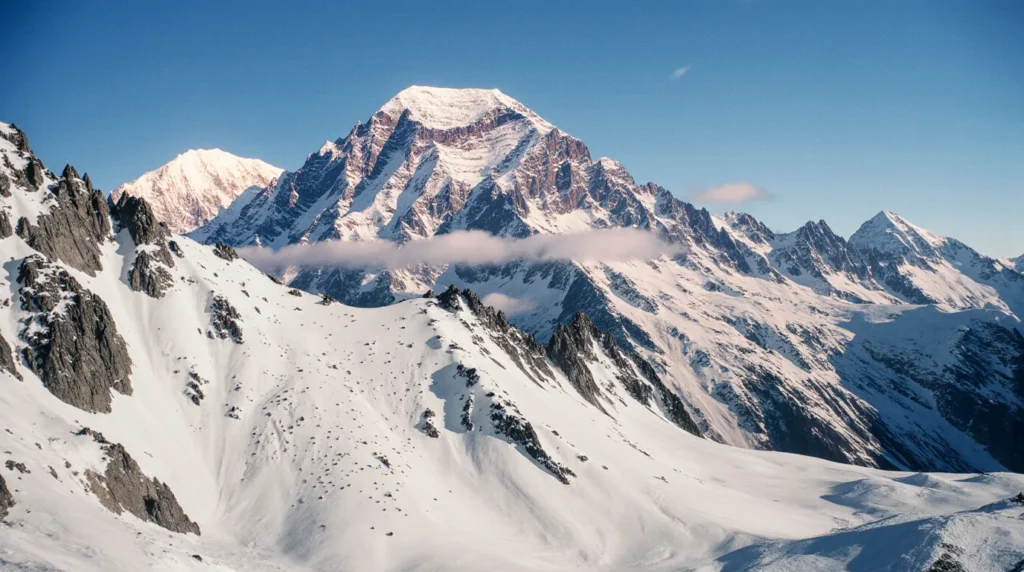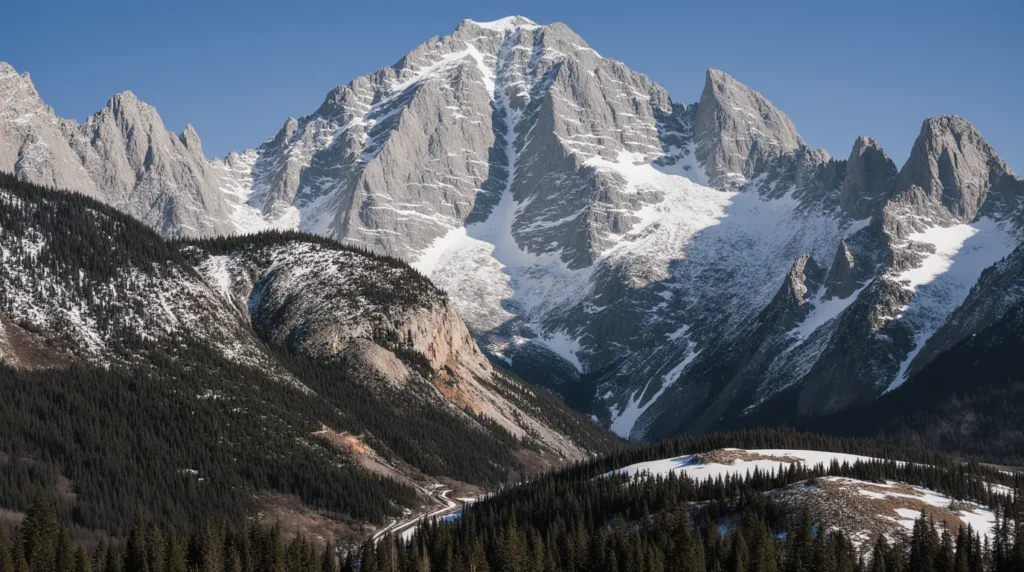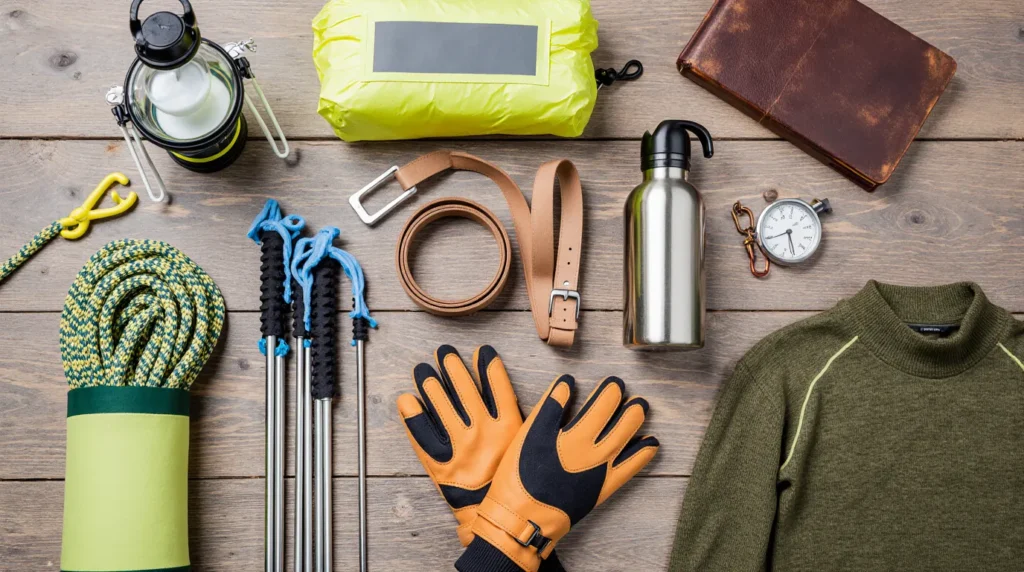
Mount Blane 2025 – Scenic Hikes & Epic Views You’ll Love
Mount Blane stands as a magnificent 2,993-meter (9,820-foot) summit in the Opal Range of the Canadian Rockies, offering adventurers like us an unforgettable hiking experience. While often confused with the more famous Mont Blanc in Europe, this Alberta treasure delivers its own unique beauty and challenges.
Located in Kananaskis Country, this rugged peak is part of Alberta’s stunning mountain landscape. We find Mount Blane particularly appealing because hiking here isn’t just about conquering a summit – it’s about enjoying remarkable physical and mental benefits while immersed in nature’s beauty. The ascent involves navigating steep scree slopes, narrow ridges, and sections requiring hands-on climbing, making it a thrilling adventure for experienced hikers. In fact, the mountain has a fascinating history, with its first recorded ascent dating back to 1955 by P.J.B. Duffy, G. Hohnson, D. Kennedy, and F. Koch.
Throughout this guide, we’ll explore everything you need to know about experiencing Mount Blane in 2025, from its breathtaking views to practical preparation tips that will make your journey memorable for all the right reasons.
Table of Contents
Why Mount Blane is a Must-Visit in 2025
If you’re seeking an extraordinary adventure in 2025, discovering Mount Blane should top your list. This magnificent peak offers experiences that rival its more famous namesake, yet remains one of the best-kept secrets of the Canadian wilderness.
A hidden gem in the Canadian Rockies
Unlike crowded tourist destinations, Mount Blane provides a serene escape for those who appreciate untouched natural beauty. Tucked within Kananaskis Country, this remote mountain delivers genuine alpine solitude. Most importantly, its relatively untraveled paths create an immersive experience that’s increasingly rare in popular hiking destinations.
For adventurers seeking authentic wilderness without crowds, Mount Blane presents the perfect opportunity. The mountain sees significantly fewer climbers compared to other summits in the Rockies, making it ideal for those craving quiet, contemplative experiences in nature. Furthermore, the absence of maintained trails to the summit preserves its wild character and ensures a genuine backcountry adventure.
How it compares to Mont Blanc and other peaks
Despite sharing a similar name with the famous European Mont Blanc, Alberta’s Mount Blane offers a completely different experience. At 2,993 meters (9,820 feet), it’s notably lower than Europe’s Mont Blanc but presents technical challenges that experienced hikers appreciate.
Additionally, Mount Blane ranks as the 11th highest peak out of 88 in Elbow-Sheep Wildland Provincial Park and 29th out of 91 in Peter Lougheed Provincial Park. This impressive stature contributes to its prominence in the region despite being less known than other Canadian Rockies landmarks.
Briefly describe Mount Blane’s location and elevation
Mount Blane rises majestically to 2,993 meters (9,820 feet) within the Opal Range of Alberta’s Canadian Rockies. The mountain sits south of Mount Evan-Thomas and north of Mount Jerram, with its nearest higher peak being Mount Jerram, located 3.3 km (2.1 mi) to the southeast.
The rugged peak forms part of a dramatic series of limestone formations that characterize the Opal Range. These visually striking geological features create jagged ridgelines and steep faces that attract technical climbers and photographers alike. From atop Mount Blane, visitors can marvel at panoramic views of Spray Lakes Reservoir, Mount Evan-Thomas, the Kananaskis Valley, and the endless ridges of the surrounding range.
8 Scenic Highlights You’ll Love on the Trail

The journey up Mount Blane rewards hikers with breathtaking scenery that changes with every step. Let’s explore the visual treasures that await along this remarkable trail.
1. Panoramic views from the summit
From the peak, my eyes wander across an endless sea of mountain ranges extending in every direction. On clear days, the vista stretches over 100 kilometers, revealing the magnificent Spray Lakes Reservoir and prominent peaks like Mount Evan-Thomas. Moreover, this 360-degree panorama offers one of the most spectacular mountain views in all of Kananaskis Country.
2. Sunrise and sunset over the Opal Range
Early risers witness the sun’s first rays illuminating the jagged peaks with golden-pink hues. As evening approaches, the setting sun casts dramatic shadows across the valleys, creating a photographer’s paradise with constantly shifting light patterns against the limestone backdrop.
3. Wildflower meadows in early summer
June through July, the lower slopes transform into vibrant carpets of alpine wildflowers. Purple asters, yellow arnica, and white mountain avens create natural gardens that contrast beautifully against the gray limestone terrain.
4. Dramatic limestone ridges
The Opal Range’s distinctive limestone formations create stunning ridgelines that seem to slice through the sky. These ancient geological features, shaped over millions of years, provide both visual drama and challenging terrain for adventurous hikers.
5. Misty valleys and cloud inversions
During certain weather conditions, especially in spring and fall, cloud inversions fill the valleys below with thick, cotton-like mist while the summit remains in brilliant sunshine—an otherworldly experience that makes you feel as though you’re floating above the clouds.
6. Wildlife sightings along the trail
Keep your eyes open for mountain goats navigating seemingly impossible slopes with ease. Marmots, pikas, and golden eagles are common companions along the route, especially during morning hours when wildlife activity peaks.
7. Hidden alpine lakes nearby
Several pristine alpine lakes dot the landscape surrounding Mount Blane, their turquoise waters reflecting the surrounding peaks. These secluded gems offer perfect spots for peaceful contemplation during your hiking journey.
8. Solitude and silence away from crowds
Perhaps the most precious highlight is something intangible—the profound silence and solitude that envelops you on this less-traveled trail. Without the constant chatter of crowded routes, you can truly connect with the mountain’s timeless presence.
What to Know Before You Go

Planning a successful hike up Mount Blane requires careful timing and preparation. Let’s examine the essential information you’ll need before embarking on this Canadian Rockies adventure.
Best time to hike Mount Blane
The optimal window for hiking Mount Blane falls between June and September, with July and August considered peak season. During these summer months, temperatures typically range from 50°F to 63°F (10°C to 17°C) at higher elevations. Nevertheless, June and September offer less crowded trails while still providing reasonably good weather conditions.
Early summer (June-July) showcases spectacular wildflower displays, whereas September delivers cooler temperatures averaging between 9°C and 21°C (48°F to 70°F). Consequently, this timeframe provides your best chance of avoiding snow and excessive cold.
Weather conditions and climate zone
Weather at Mount Blane can be notoriously unpredictable. According to forecasts, temperatures at the summit (2993m) can range from -2°C to 12°C (28°F to 54°F) depending on the season. Furthermore, sudden weather changes should be expected—you might experience all four seasons in a single day.
Summer thunderstorms typically develop in afternoons, creating potential hazards at high elevations. Precipitation varies throughout the year, with heaviest rainfall generally occurring in winter months. Ultimately, always check current forecasts before setting out, as mountain weather can shift rapidly.
How to find Mount Blane on a map
Mount Blane is located in the Canadian Rockies at coordinates 53.10° N, 127.70° W. Positioned within Kananaskis Country in Alberta, this peak forms part of the Opal Range. Nearby landmarks include Mount Evan-Thomas to the north and Mount Jerram to the south, serving as useful reference points.
Safety tips for high-altitude hiking
At higher elevations, hikers may experience mild altitude-related symptoms including headaches, dizziness, and fatigue. Stay vigilant about your body’s signals and descend if symptoms persist.
Pack appropriate gear for variable weather conditions—layers, waterproof clothing, and sun protection are essential. Besides, starting early helps avoid afternoon thunderstorms that frequently develop over the mountains.
Familiarize yourself with emergency numbers (Canada: 911) and maintain awareness of your location throughout the hike. Given the mountain’s remote setting, carrying a first aid kit, extra food, and proper navigation tools becomes absolutely essential for your safety.
How to Prepare for the Hike

Tackling Mount Blane demands proper preparation and the right equipment for a safe and enjoyable experience. Let me walk you through what you’ll need for conquering this Canadian Rockies gem.
Essential gear checklist
A sturdy backpack (20-35 liters) forms the foundation of your gear setup. For footwear, I recommend hiking boots with solid ankle support rather than trail runners, given the rocky terrain. Pack clothing in layers: moisture-wicking base layer, insulating mid-layer, and waterproof outer shell to handle sudden weather changes.
Other essentials include:
- Water bladder (2 liters) and refillable bottle
- Trekking poles for stability on steep sections
- Quick-dry microfiber towel
- Sunglasses, sunscreen, and hat
- First aid kit with blister plasters
- Headlamp with spare batteries
Route overview and difficulty level
Mount Blane represents a challenging trek rated as “Hard” (4 out of 5) on standard difficulty scales. Expect 5-8 daily hiking hours with elevation changes exceeding 600-1200m. The trail involves rocky sections, limestone ridges, and potentially steep cabled segments.
Sufficient cardiovascular fitness and leg strength are crucial. Prior to your trip, train regularly by hiking similar distances and elevations. Importantly, practice carrying your loaded backpack during training hikes to acclimate to the weight.
Navigation tips for unmarked trails
On Mount Blane’s unmarked sections, reliable navigation becomes essential. Carry multiple navigation tools: physical map, compass, and digital GPS backup. Check your position every 15-20 minutes against your map to avoid getting lost.
Look for natural markers like heavily trodden paths and rock cairns. Remember the STOP principle whenever uncertain: Stop, Think, Observe, Plan. Likewise, avoid “bending the map” – if landmarks don’t match your location, trust the terrain rather than your assumptions.
Leave No Trace principles
Following Leave No Trace ethics preserves Mount Blane’s beauty. The seven core principles include: planning ahead, traveling on durable surfaces, proper waste disposal, leaving natural objects undisturbed, minimizing campfire impacts, respecting wildlife, and considering other visitors.
Practically, step through mud puddles rather than around them to prevent trail widening. Also, pack out all trash and food scraps, even “biodegradable” items like apple cores.
Conclusion
Mount Blane stands as a remarkable destination for hikers seeking both challenge and beauty in the Canadian Rockies. Throughout our journey exploring this magnificent peak, we’ve discovered why this 2,993-meter summit deserves a spot on your 2025 adventure list. Unlike its European namesake, our Mount Blane offers something increasingly rare – genuine wilderness solitude away from tourist crowds.
The mountain rewards your efforts with breathtaking panoramic views, dramatic limestone formations, and colorful wildflower meadows during summer months. Wildlife sightings and hidden alpine lakes add to the magic of this experience. Most notably, the profound silence found on these less-traveled trails creates space for deeper connection with nature.
Success on Mount Blane demands proper planning. Summer months between June and September provide the best conditions, though weather changes quickly at this elevation. Adequate gear, physical preparation, and navigation skills become essential when tackling the unmarked trails and challenging terrain.
What makes Mount Blane truly special is how it balances accessibility with authentic wilderness. This peak offers technical challenges for experienced hikers while remaining attainable for well-prepared adventurers. After all, few experiences compare to standing atop this limestone giant, gazing across endless mountain ridges stretching toward the horizon.
Those who make the journey up Mount Blane return with more than photographs. They carry memories of pristine alpine environments, physical achievement, and quiet moments of awe that simply can’t be found on more popular trails. Should you choose to visit this Canadian Rockies treasure in 2025, pack your sense of adventure alongside your gear – Mount Blane will certainly deliver an unforgettable experience.
FAQs
Q1. How difficult is the hike to Mount Blane? Mount Blane is considered a challenging hike, rated as “Hard” on standard difficulty scales. The trail involves rocky sections, limestone ridges, and steep segments. Hikers should expect 5-8 hours of daily hiking with significant elevation changes. Good cardiovascular fitness and leg strength are crucial for this trek.
Q2. When is the best time to hike Mount Blane? The optimal window for hiking Mount Blane is between June and September, with July and August being the peak season. During these summer months, temperatures typically range from 50°F to 63°F (10°C to 17°C) at higher elevations. June and September offer less crowded trails while still providing reasonably good weather conditions.
Q3. What are some scenic highlights along the Mount Blane trail? Mount Blane offers numerous scenic highlights, including panoramic views from the summit, dramatic limestone ridges, colorful wildflower meadows in early summer, and hidden alpine lakes. Hikers can also experience breathtaking sunrises and sunsets over the Opal Range, and potentially spot wildlife such as mountain goats and golden eagles.
Q4. How should I prepare for hiking Mount Blane? Preparation for Mount Blane includes packing essential gear like a sturdy backpack, proper hiking boots, layered clothing, and navigation tools. It’s important to train regularly before the trip by hiking similar distances and elevations. Familiarize yourself with the route, check weather forecasts, and follow Leave No Trace principles to preserve the mountain’s beauty.
Q5. Are there camping options available on Mount Blane? Yes, camping is possible on Mount Blane. There are both official and unofficial campsites available for bivouacking along the trail. These sites are selected based on their accessibility to water and flat ground. When camping, it’s important to pitch your tent before sunset and pack it up before sunrise, and always leave no trace of your stay.



